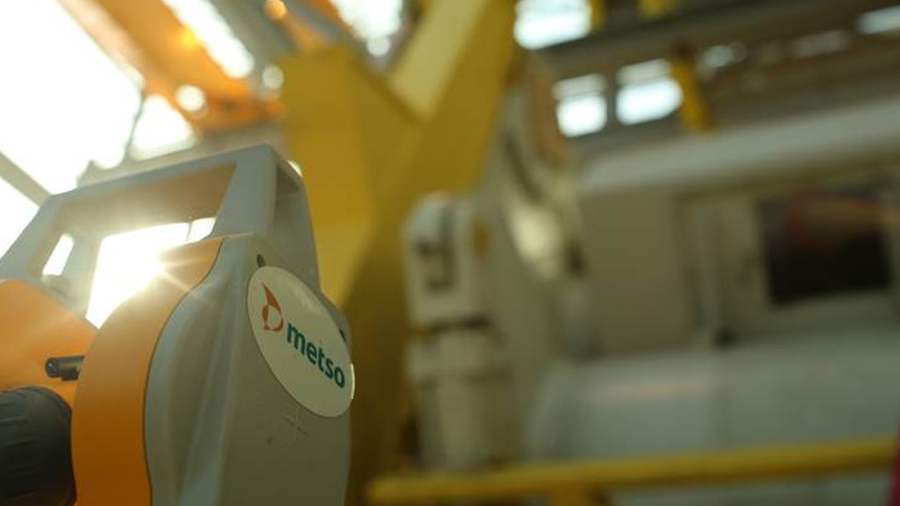Blog: Helping our customers to run their operations more efficiently with less energy and water

At Metso, the concept of sustainability does not apply only to our own operations, but also to the operations of our customers. For us, sustainability is about enabling our customers to manage natural resources in a way that allows them to continue to operate without hurting the environment. So what are we doing to help make this happen?
Our customers operate in the mining and aggregates industries. Both of these industries break large rocks into smaller fractions in order (for aggregates) to produce or (for mining) to separate and extract the value-added commodity. The process of breaking down rocks is called comminution and is very energy-intensive. In fact, comminution alone represents 2 to 3 percent of the world’s electricity consumption.
Throughout our history, Metso has built its leadership on improving the comminution process by developing and offering ever more energy-efficient technology, and this has become an essential driver of our innovation. Our Vertimill™ is a very good example of a product that contributes significantly to the sustainability equation by using 25-30% less energy than existing fine grinding technology. Recently, we developed and introduced our high-pressure grinding roll technology, Metso’s HRC™, which is 10% more energy efficient than its peers – and increases circuit capacity.
Surprisingly, there are also non-“grinding” technologies that can reduce the energy spent in comminution! This year alone, Metso is launching two new fine wet classification devices. Both units, when inserted in a closed-circuit comminution flowsheet, provide a sharper particle classification, allowing right-sized product to bypass the grinding mill, thus saving a significant amount of energy.
Energy has been a focus for many years, but how to solve the increasingly acute water issue?
In addition to the high energy demand, the mining industry faces a new challenge with water. Many of the richest mineral deposits are located in semi-desertic or desertic environments where water is very scarce. And most mineral processes use a lot of water for grinding and separation. This makes developing and operating mines in these areas a significant issue.
Furthermore, water used in the grinding and separation stages has to be removed downstream in order to produce dry concentrate. This water extraction is a costly and energy-intensive process.
The first and most obvious response to the water issue is to avoid adding water in the first place. This is what is naturally called dry processing. Metso’s HRC is a dry grinding solution, and in a number of applications it can be coupled with our air (dry) classifiers.
When wet separation is required in a minerals process, the only solution is to extract and recycle the water after it has been utilized as a medium for separation. For this purpose Metso has developed highly efficient dewatering equipment, such as the VPA filtration technology, or IPS high-rate thickeners.
Less processing, less energy and less water altogether
Another very wise way to reduce both water and energy usage is to reduce the amount of raw material that is extracted from the ground and further processed. This can be achieved with highly selective processing stages between the mine and the concentrator.
The mining industry has always been known for handling huge volumes of ore, sometimes moving entire mountains. Unfortunately, because we are unable to accurately discriminate valuable material from waste, a significant portion of the volume extracted is actually waste material. Imagine a time when only the “good” ore is extracted or waste is discarded in the very early stages of processing. By reducing the amount of ore excavated, transported, crushed, ground, separated, etc, the consumption of energy and water is reduced by the same proportion, offering a breakthrough in sustainability for the mining industry.
The methods for early removal of waste are commonly called ‘pre-concentration’. The focus on pre-concentration is new to the industry because the previous focus was on volume, not sustainability. At the moment, very few applications of pre-concentration exist. Metso has equipment in its portfolio that can be used for pre-concentration in the right context, like vibrating screens, but the largest opportunity is with new technologies like sensor-based ore sorting, which is a technology that Metso is investing in. Sensor-based ore sorting uses a variety of new sensing techniques to identify minerals and waste and to mechanically separate them in bulk quantities or at the particle level.
In-pit solutions are the public transportation of mining
Pre-concentration will preferably happen close to the mine, underground or in the pit. And just as we need to reduce the total volume of ore handled, we also need to look at the way it is transported. As a comparison, large cities all over the world are finding ways to reduce the number of private vehicles on the road by investing in public transport.
The same is happening in the mining industry. In traditional mining, large trucks are used to transport big rocks from the pit to a point on the surface where the rocks can be crushed. But many mines today are removing trucks from their open pits, and there will be many more doing this in the future. Why? Safety is one factor: most of the accidents at mines are related to trucks. Trucks consume a lot of fuel and generate a lot of emissions, including dust from the haulage.
So what do we do if we remove the truck component? What is the equivalent of public transport for our mines? Metso’s In-the-Pit Solutions. Mobile feeders, mobile crushing and screening equipment, and mobile conveyors provide a single and continuous high-rate material transport solution, replacing tens of individual trucks. Metso’s In-the-Pit Solutions are a safer and more sustainable alternative to truck haulage and at a significantly lower operating cost.
More News
{{ commodity.name }}
{{ post.title }}
{{ post.date }}

Comments